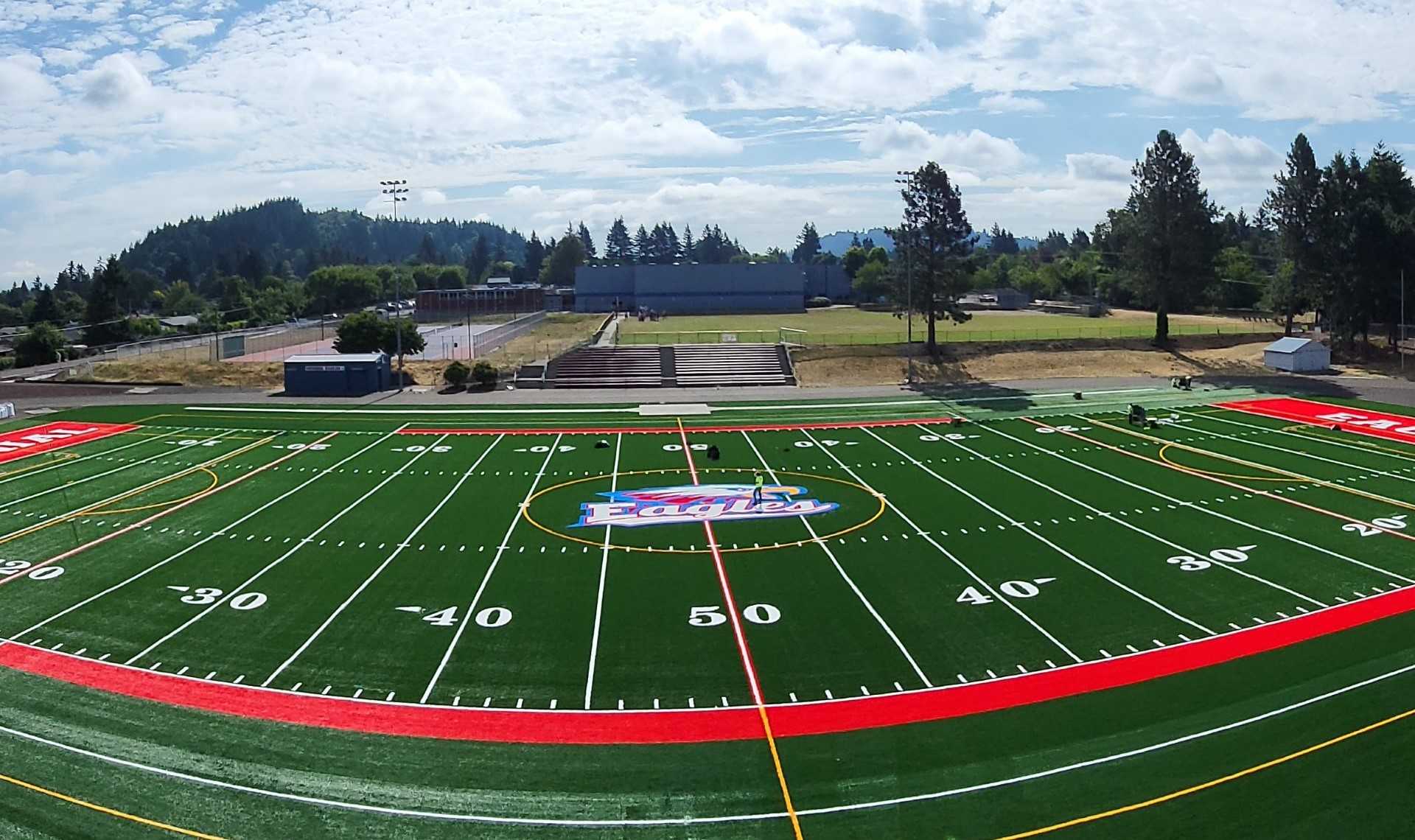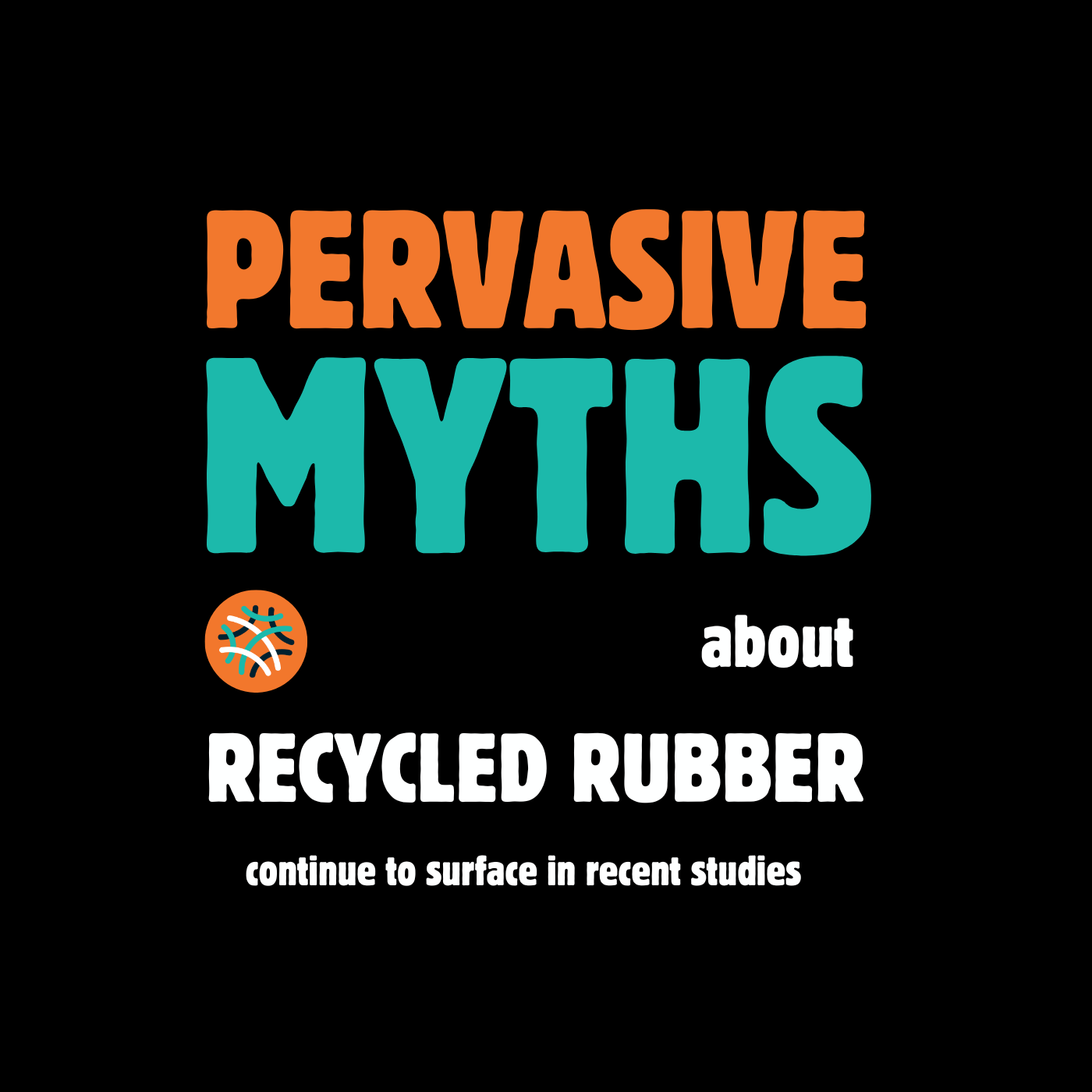
Research & Resources
Access comprehensive studies, analysis, and real-world data about recycled rubber surfaces.

Access comprehensive studies, analysis, and real-world data about recycled rubber surfaces.
.png)
A science-based blueprint for how communities can institute cost-effective measures to ensure that their turf fields are environmentally sustainable, while also providing a year-round space for play.

Comprehensive data demonstrates that recycled rubber delivers documented environmental, economic, and community benefits while maintaining the highest standards for safety.

Recycled rubber offers communities the ability to create safer, more sustainable, and highly accessible public recreation spaces. By repurposing over 220 million tires annually, these innovative surfaces have redefined how we design and experience our community spaces.

Recycled rubber has transformed the American sports and recreation landscape, dramatically increasing access to high quality facilities and providing safe, durable surfaces for parks, playgrounds, and playing fields nationwide.

Analysis: “no significant health risks to players, coaches, referees and spectators from on-field or off-field exposure” to crumb rubber infill based on the assessment method and available data.

Key finding: "Chemical exposures from tire crumb rubber are likely limited and similar between natural grass and synthetic turf fields"

Conclusion: "Very low level of concern" for players and workers

Key finding: "Risk to health is virtually negligible"

“The Department of Health recommends people who enjoy playing soccer continue to play regardless of the type of field surface,” lead investigator Cathy Wasserman, a Washington state epidemiologist for non-infectious diseases, said.

The Better Play Initiative’s research shows confidence in recycled rubber and artificial turf as families face weather closures and accessibility gaps in local community parks, playgrounds, and sports fields

Compared to natural alternatives, turf is lower maintenance and preserves the same field quality in all weather.
.png)
Two recent studies from European researchers highlight containment measures for artificial turf fields that use crumb rubber infill.

The Payson, Arizona, school district has recently approved a plan to invest in a new turf field for use by football, soccer, and other sports.

In his latest op-ed, BPI Program Director Scott Gerber details why communities should look to the newest science instead of scare tactics when it comes to artificial turf. With ongoing national debates surrounding turf and grass, leaders should have access to the latest research on the safety of crumb rubber infill and the context behind turf’s year-round usability.

It is the jewel of the Marshall High School athletic complex as the school's new artificial turf field welcomed its first football practices to start this week.
.png)
Over the past couple of weeks, two major national outlets, The New York Times and The Washington Post, have covered ongoing debates over artificial turf in communities across the country. These are important discussions with broad implications for safe play around the country.
.png)
In Panama City Beach, Florida, one of the region's most significant sports tourism drivers is about to get even more playtime.

Across the state of Oregon, more and more top high schools are choosing artificial turf for their football and soccer fields.

Across the state of Oregon, more and more top high schools are choosing artificial turf for their football and soccer fields.

When it comes to artificial turf and crumb rubber, myths behind the material’s safety for humans and the environment persist. They remain despite updated scientific research showing the opposite — that turf using recycled rubber infill is just as safe as grass.

Roanoke's Hidden Valley High School is transitioning from grass to artificial turf, citing all-weather durability.

The City and County of San Francisco, of all places, should make decisions grounded in science. Yet, when it comes to a $45 million playground renovation, the San Francisco Recreation and Parks Department seems ready to abandon facts for fear—and Bay Area families will pay the price.
.png)
A recent nationwide survey commissioned by the Better Play Initiative found that playground safety is on the mind of most Americans.

New research from the Better Play Initiative highlights a growing public interest in playground solutions that combine safety, durability and sustainability

A look at 10 parks and playgrounds around the country that use recycled rubber to promote active play throughout the year.

In Bend, Oregon, local baseball and softball coaches are pushing for upgrades to the facilities at the Bend-La Pine School District.

At Clemyjontri Park in McLean, VA, there is something for everyone.

At a time when high-quality recreation is at a premium, a moratorium on turf risks standing in the way of safe and accessible opportunities for play.
.png)
The reality is that when rain is in the forecast, the question on parents’ minds isn’t just “Will it stop in time?” but “Will my kid have a good day or a bad day?”
.png)
A new study from the California Environmental Protection Agency (CalEPA) and Office of Environmental Health Hazard Assessment (OEHHA) adds to the growing consensus on recycled rubber.

A new study from the California Environmental Protection Agency (CalEPA) and the Office of Environmental Health Hazard Assessment (OEHHA) examining the potential health risks of synthetic turf fields for athletes, referees, coaches, and spectators found no significant risk from exposure on or off the field to crumb rubber infill.
.png)
Campaign will provide access to definitive studies and the latest information on recycled rubber surfaces, especially as leaders consider how to provide members of the community with safe, sustainable, and all-season recreation spaces.

New Zealand announced a national tire recycling program. Under the new "Tyrewise" scheme, tire shops can have their tires collected for free and individuals can recycle up to five tires per day at public collection sites.

University College of Cork announced a new research plan to investigate best practices for recycling tires throughout Ireland. Researchers will weigh the benefits and costs of recycling, pyrolysis, devulcanization, and gasification. The project comes as Ireland seeks a more optimal strategy for its end-of-life tires: Ireland collected 63,000 tons of tires in 2022.

Mitsubishi Chemical Group (MCG) has begun producing carbon black from recycled tires. MCG creates carbon black by crushing tires in its coke ovens, and the company reports that the recycled carbon black is comparable to new carbon black. MCG plans to bring its recycled carbon black to market in 2026.

Waukegan Park District, a suburb outside of Chicago, is planning to renovate Roosevelt Park into the city's first almost fully inclusive recreational facility, replacing wood chips in the playground with Poured-In-Place surfaces made from recycled rubber to enhance accessibility for children with disabilities. The renovation, estimated to cost $1.5 million, aims to create a fully accessible playground while making much of the 12.7-acre park as inclusive as possible.

The Scrap Tire Research and Education Foundation (STREF) has been awarded $3.8 million by the US Environmental Protection Agency to develop Environmental Product Declarations (EPDs) for the tire recycling industry. The grant is part of a broader $160 million initiative under the Inflation Reduction Act, aimed at reducing climate pollution from construction materials. The EPDs will detail the environmental impacts of recycled tire products and support the use of ground tire rubber in asphalt, improving pavement life and fuel efficiency.

The Global Sustainable Tire Materials market is projected to grow from $34.9 million in 2023 to $46.38 million by 2032. This growth is driven by increasing demand for eco-friendly tire components, including recycled rubber and bio-based materials, amid stringent carbon emission regulations and circular economy strategies.

Who says you can't have a little fun while mythbusting? "I'm Just a Tire," is a playful song that tells the story of what happens to end-of-life tires. Press play and learn how more than 200 million tires annually transform into the surfaces that keep communities active year-round.

How Tire is Recycled in the Factory? Leading Rubber Recycling Factory
